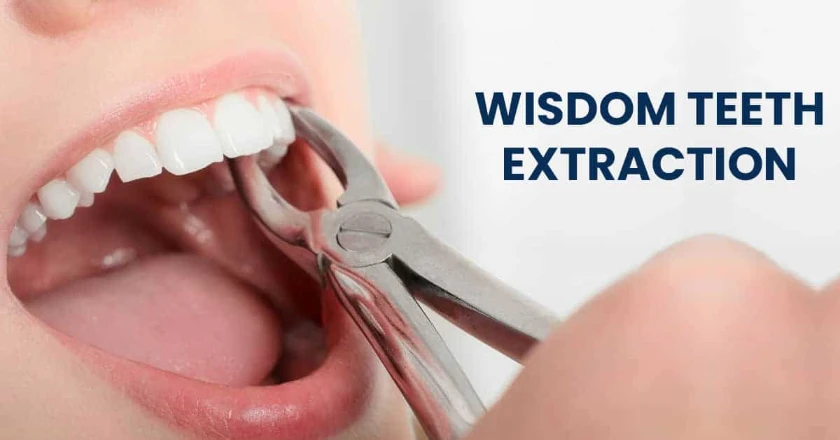Wisdom Teeth Extraction

If you are in constant discomfort because of the wisdom tooth, it must be making eating, sleeping, and focusing on daily work hard for you. The pain, swelling, and pressure on the jaw will only get worse over time. Also, if left untreated, it will cause infection, damage your nearby teeth, and lead to jaw problems. So, get it removed as early as possible.
Rincon Family Dentistry provides wisdom teeth extraction using advanced techniques and safe sedation. Patients across Tucson choose our clinic for reliable care and effective results.
Meet Your Tucson Dentist
Dr. Brock Boudreaux, (pronounced “Boo-drow”) attended Utah Valley University for his undergraduate degree. After which he traveled across the country to Kentucky where he received his Doctor of Dental Medicine degree from the University of Louisville School of Dentistry. Though he is a Louisville Cardinal for life, he is finding it very easy to become a Wildcat fan!
Let’s Get Your Smile
Taken Care Of
Do you have a question or would you like to schedule a visit? Contact our team, and we will assist you right away. We are here to offer thoughtful guidance and a smooth start to your care.
Our Wisdom Teeth Extraction Services in Tucson, AZ
With years of experience, we understand that no two extractions are alike. From simple removals to complex surgical cases, our dental team and oral surgeons are equipped to handle them safely.
Simple Wisdom Teeth Extraction
When a fully erupted wisdom tooth is causing pain or crowding, we recommend removing it. Our dental specialist will numb the area with a local anesthesia, gently loosen the tooth with instruments, and pull it out using a forcep.
Finally, a gauze is placed over it to speed up the healing process. Once the tooth is removed, you will no longer feel any discomfort. However, full recovery takes time. We discuss the diet and tips to ease pain after the tooth extraction.
Surgical Wisdom Tooth Extraction
If the wisdom tooth is not erupted, impacted, or not in the right place, you will need surgery to remove it. Many Tucson residents have their molars extracted through surgery at our clinic.
Our maxillofacial surgeons are experienced and trained to perform complex surgical procedures to remove impacted teeth. Before performing any surgery, our dentist takes an X-ray to evaluate the condition of your teeth.
Before surgery, we will review your case, as we do for other tooth extractions, to ensure the safest and most comfortable procedure possible.
Soft Tissue Impaction
When a molar sits below the gums but does not fully erupt, it can cause swelling, jaw stiffness, and repeated infections. Our oral surgeon makes a small incision, removes the tooth, and provides post-op guidance to prevent further issues. Healing is usually faster in these cases.
Partial Bony Impaction
In some cases, the tooth partially emerges but remains lodged in the jawbone. This can irritate gums, trap bacteria, and crowd nearby teeth. We create a gum incision, removes a small portion of bone, and may section the tooth into smaller pieces to ease removal. IV sedation is available if you feel nervous about the procedure.
Full Bony Impaction
This is the most complex type. The tooth is surrounded by bone and often grows sideways due to limited space in the jaw. It may lead to severe pain, crowding, or damage to neighboring molars.
We review detailed scans, plan carefully, and remove the tooth in sections while preserving surrounding tissue. Recovery takes longer, but our team provides clear aftercare instructions to help you heal safely.
When to Have Wisdom Teeth Removed?
Most people develop their third molars between the ages of 17 and 25, so it’s best to have them removed during early adulthood. Problems with third molars are common enough that some oral surgeons recommend removing them before they even erupt.
However, some patients elect not to have their wisdom teeth removed, preferring to take a wait-and-see approach.
No matter how patients feel about wisdom tooth removal, some circumstances require extracting one or more third molars. If a wisdom tooth becomes impacted, it can lead to serious secondary problems with infections and crowding.
Removing these problematic third molars in advance can help to prevent:
Gum Infections
Impacted or only partially erupted wisdom teeth create a breeding ground for bacteria. Gum infections can lead to pain, swelling, problems with swallowing, and difficulty chewing.
Cyst Formation
Cysts are fluid-filled sacs that develop inside a patient’s jawbone as a result of wisdom tooth impaction. Over time, they can expand, damaging adjacent parts of the jawbone and nearby teeth.
Crowding of Other Teeth
Most people don’t have enough room in their mouths for wisdom teeth. Even when they erupt properly and come in straight, they can crowd other teeth throughout the mouth, making it harder for patients to keep them clean.
How to Prepare for the Wisdom Teeth Extraction Appointment?
The first step is to schedule a consultation with an oral surgeon who can perform the wisdom teeth extraction. During this consultation, the surgeon will explain the procedure and patients will have a chance to ask any questions they may have.
It’s important to avoid eating or drinking for at least six hours before the appointment if a general anesthetic or sedative will be used.
Patients should still take prescription medications. However, consuming foods or liquids before undergoing anesthesia can increase the risk of complications. Patients who do not need conscious sedation or general anesthesia don’t need to avoid food and drinks.
On the day of the surgery, most patients take medications to minimize pain and swelling. Even if they do not plan to be sedated, patients should still bring a parent or another responsible adult to the appointment. Most extractions take only 30 to 60 minutes, at which point the patient will be able to go home to recover.
What to Expect During Wisdom Tooth Recovery?
Once the local anesthesia wears off, patients may experience pain, swelling, and discomfort. Most of the time, these post-operative symptoms can be managed using over-the-counter anti-inflammatories like Ibuprofen, but patients may also be prescribed other painkillers, especially following more complex wisdom tooth surgeries.
Here’s what to expect during each stage of the recovery process:
- First day: blood clots will form
- Two to three days: the swelling should be going down
- One week: a dentist can remove the remaining stitches
- Seven to ten days: the patient should be free from soreness and swelling
- Two weeks: the wounds should be healed
Post-Op Care
The most important part of post-op care for wisdom tooth extractions is keeping blood clots in place. The clots start to form almost immediately after the surgery and they help to prevent excess bleeding, protect against infection, and allow new tissue to grow.
Dislodging them can lead to a painful condition known as dry socket, which will require an dental emergency visit care.
To keep the blood clots in place, patients should avoid these activities for at least 24 hours:
- Brushing near the extraction site
- Using mouthwash
- Consuming hot drinks
- Using straws
- Chewing
- Smoking
- Using straws
- Drinking alcohol
Stick to liquids and soft foods for the first day, and avoid chewing gum or eating sticky candy for the first two to three days after the surgery.
Otherwise, just follow the oral surgeon’s guidelines and look for signs of infection such as a fever, severe pain, or excessive bleeding. Infections are rare when patients keep the area clean and follow the best practices described above.
Schedule a Consultation Today
Wisdom tooth removal isn’t as scary as many people think. It’s a standard procedure with a low rate of complications and a quick recovery time.
Don’t put off removing wisdom teeth until they become severely impacted. Schedule a consultation with an wisdom teeth removal dentist to discuss options today.
Frequently Asked Questions
Don’t be afraid to ask questions at the pre-surgical consultation. Many patients are nervous, and addressing concerns in advance is the best way to alleviate anxiety about this common procedure. Patients can also find answers to some of the most frequently asked questions about wisdom tooth removal below.
Is Wisdom Tooth Removal Painful?
Wisdom tooth removal, itself, should not be painful since patients will be given anesthesia before the procedure.
Once the anesthesia wears off, some pain or discomfort is normal.
However, most patients can manage their pain and soreness effectively using over-the-counter medications.
Can I Get My Wisdom Teeth Out Without Anesthesia?
Most patients do not require general anesthesia or sedation for wisdom tooth removals.
Oral surgeons can use local anesthesia for basic wisdom tooth extractions. However, more complex surgeries may require some form of sedation.
Should I Get 2 or 4 Wisdom Teeth Removed?
Most oral surgeons recommend that patients have all four of their wisdom teeth removed, even if only one or two of them are actively causing pain.
Wisdom teeth are notorious for causing dental problems, so even if those third molars haven’t erupted yet, it makes more sense to remove them than it does to take a wait-and-see approach.
Does Removing Wisdom Teeth Change Face Shape?
People’s wisdom teeth are located in the backs of their mouths, where their jawbones are very dense.
As a result, taking them out does not have any noticeable impact on jaw or face shape.
Are You Asleep for Wisdom Teeth Removal?
In most cases, patients are awake but numb for the extraction procedure. Those with dental anxiety can also receive a conscious sedation anesthetic. Conscious sedation may or may not put people to sleep, in literal terms, but it usually prevents the formation of conscious memories.


